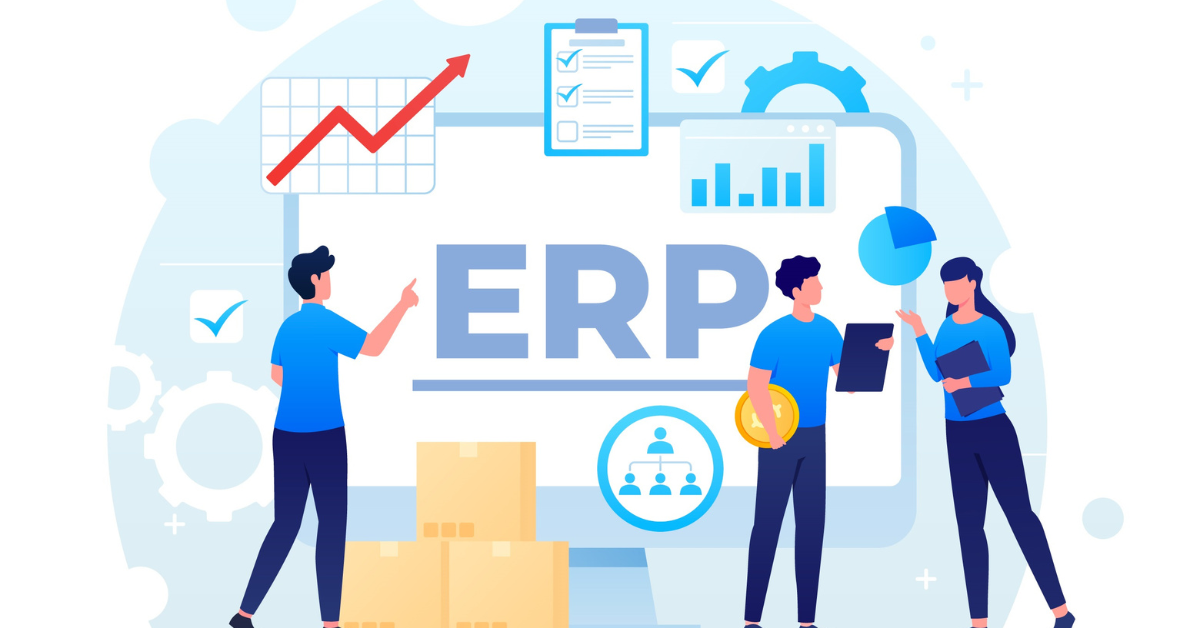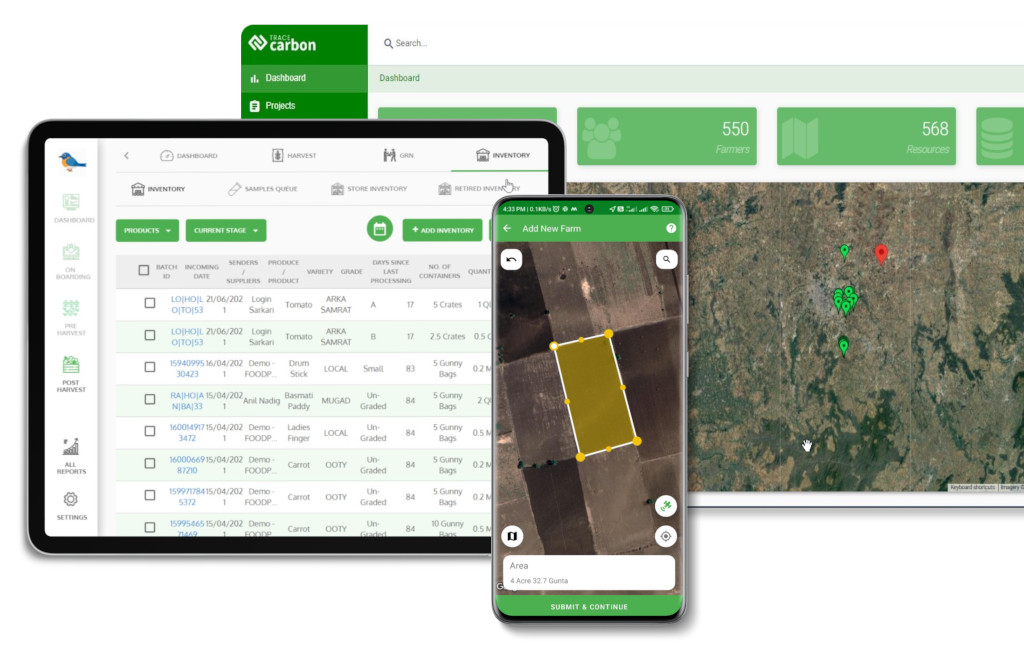Contact: +91 99725 24322 |
Menu
Menu
Quick summary: ERP integration for EUDR compliance made simple. Learn how to automate DDS filings, validate data, and ensure audit-proof traceability with TraceX.

ERP Integration for EUDR Compliance is critical for importers managing thousands of SKUs and suppliers. Legacy ERP systems lack geolocation mapping and DDS workflows, leading to errors and shipment delays. By connecting procurement and inventory data with EUDR compliance platforms through APIs, companies automate supplier onboarding, validate GeoJSON boundaries, and generate DDS in TRACES instantly. This eliminates manual re-entry, reduces compliance workload by up to 80%, and ensures audit-proof filings. ERP integration transforms EUDR compliance from a time-consuming risk into a seamless, scalable process that protects both EU market access and operational efficiency.
The EUDR compliance bottleneck is becoming a pressing issue for EU importers of rubber, coffee, timber, cocoa, and other regulated commodities. Large operators often manage thousands of SKUs, a vast supplier base spread across multiple countries, and fragmented documentation ranging from certificates to GeoJSON files. Without streamlined systems, this creates silos, delays, and a high risk of filing errors.
Manual Due Diligence Statement (DDS) preparation is no longer sustainable under EUDR. Each shipment requires precise geolocation validation, risk assessment, and audit-ready documentation before entering the EU market. Handling this manually via spreadsheets or email chains not only consumes valuable staff hours but also increases exposure to port delays, demurrage costs, and compliance fines.
This is where ERP integration becomes essential—linking procurement, supplier, and compliance data in one seamless flow.
Key takeaways
Most enterprises rely on ERP systems to handle procurement, inventory, and logistics, but when it comes to EUDR compliance, these systems hit a wall. Traditional ERPs are not designed to process geolocation polygons, run deforestation risk checks, or generate Due Diligence Statements (DDS) in TRACES format. This gap forces compliance teams to fall back on manual workarounds.
The result? Data silos and inefficiencies. Supplier details may live in one system, contracts in another, and geolocation files scattered across email threads. Teams end up duplicating data entry, wasting hours chasing suppliers, or correcting errors in formats that TRACES rejects. Each manual touchpoint not only slows down operations but also increases the risk of costly mistakes—from mismatched HS codes to incomplete supplier references.
From a strategic point of view, this gap also creates compliance fragility. A single staff departure or delayed supplier response can stall DDS filings, leaving shipments vulnerable to port holds. Importers managing multi-SKU, multi-port operations face an even higher exposure, as fragmented systems make it nearly impossible to scale compliance efficiently.
The fresh angle: ERP systems are great at managing what you buy and sell—but not where it comes from. EUDR demands geolocation-first workflows that ERPs simply weren’t built to handle. The solution lies in bridging the two worlds through API-driven integrations that turn compliance from a bottleneck into a built-in workflow.
Get expert insights on EU TRACES integration
Learn how leading exporters are building audit-proof compliance with EUDR API Workflows
For large importers, integration is not a luxury—it’s survival. Compliance teams cannot afford to toggle between ERPs, spreadsheets, and regulatory portals while racing against shipping deadlines. By embedding EUDR compliance directly into ERP systems, companies move from reactive firefighting to proactive governance.
ERP integration shifts compliance from being a compliance burden to becoming a competitive advantage. Importers who automate today will be the ones moving containers seamlessly tomorrow, while competitors get stuck at port over a missing DDS field.
APIs are the missing link that transforms traditional ERPs into EUDR-ready compliance engines. Instead of ripping and replacing legacy systems, APIs create a bridge that lets data flow seamlessly between procurement workflows and regulatory requirements.
APIs are not just technical enablers—they’re risk mitigators. By removing manual touchpoints, they minimize the chance of DDS rejection at the port. In other words, APIs aren’t just connecting systems—they’re protecting shipments, revenues, and reputations.
Consider a global tire manufacturer importing natural rubber and finished tires into the EU, with a portfolio of 10,000+ SKUs across multiple suppliers and countries. Under EUDR, each shipment requires a Due Diligence Statement (DDS) complete with geolocation, supplier references, and risk assessments.
The impact is immediate: DDS preparation time drops from 10 hours to under 1 hour, errors are drastically reduced, and the compliance team can scale operations without adding headcount. For the tire manufacturer, this means fewer port delays, lower compliance costs, and faster time-to-market—turning compliance into a competitive edge.
Integration doesn’t just save time—it unlocks capacity. The same team that once struggled with paperwork can now focus on supplier engagement, sustainability audits, and proactive risk management.

TraceX’s EUDR platform has integration capabilities that connect seamlessly with ERPs and EU TRACES APIs to auto-import supplier data, validate GeoJSON plots, and auto-generate DDS filings. This eliminates manual errors, ensures consistent data across systems, and enables real-time status tracking — making EUDR compliance faster, audit-ready, and risk-free.
A mid-sized cocoa importer manages thousands of suppliers and transactions in their ERP system (e.g., SAP, Oracle NetSuite). Traditionally, when preparing for EUDR compliance, the compliance team has to:
This process is time-consuming, error-prone, and costly.
With TraceX ERP Integration:
Outcome:
Context (Before TraceX):
A cocoa exporter in Ghana works with multiple cooperatives. Each harvest season, farmers submit plot-level data in different formats. The exporter’s compliance team spends weeks manually checking GeoJSON files for geometry errors and comparing them against deforestation risk layers. Even when verified, procurement managers often don’t know which batches are compliant, leading to mix-ups and potential TRACES rejections.
With TraceX GeoJSON + ERP Integration:
Outcome:
Context (Before TraceX):
A rubber exporter in Côte d’Ivoire uses an ERP (SAP) to manage logistics. When a shipment is ready, dispatch teams create delivery notes in the ERP. The compliance officer then manually prepares an outbound DDS declaration, re-checks supplier reference numbers, and uploads everything into TRACES. This duplicate work takes days and increases the risk of mistakes that could trigger TRACES rejection or port delays.
With TraceX EUDR Portal Integration:
Outcome:
Context (Before TraceX):
A cocoa importer in Rotterdam prepares DDS filings manually. After validating supplier geolocation data, the compliance officer logs into TRACES separately, uploads spreadsheets, fills forms, and waits days for confirmation. Mistakes in data formatting often trigger rejections, causing shipment delays and demurrage fees at port.
With TraceX TRACES Integration:
Outcome:
In short: TraceX acts as the bridge between your supply chain data and EU TRACES, automating filings so importers can focus on trade, not paperwork.
Integrating your ERP with TraceX ensures that supplier data, transactions, and geolocation records flow seamlessly into your Due Diligence System. This eliminates manual rework, reduces the risk of TRACES rejections, and creates an audit-proof DDS filing process. With real-time validations, automated submissions, and blockchain-backed traceability, exporters and importers can focus on trade growth while staying fully compliant with EUDR.
Want the full picture? Read our blog on EUDR Due Diligence and learn how to file DDS with confidence.
With EUDR deadlines approaching, are your supplier assessments audit-proof?
Don’t wait until customs rejects your DDS. Learn how to file correctly under EUDR.
ERP integration auto-imports supplier and transaction data into TraceX, reducing manual errors and ensuring filings are consistent, complete, and audit-ready.
Yes. By validating GeoJSON, supplier references, and certifications before submission, TraceX minimizes the risk of incomplete or inaccurate DDS filings being rejected in TRACES.
Absolutely. Whether you export cocoa, coffee, timber, or rubber, ERP integration ensures end-to-end traceability, streamlined compliance, and faster customs clearance.
